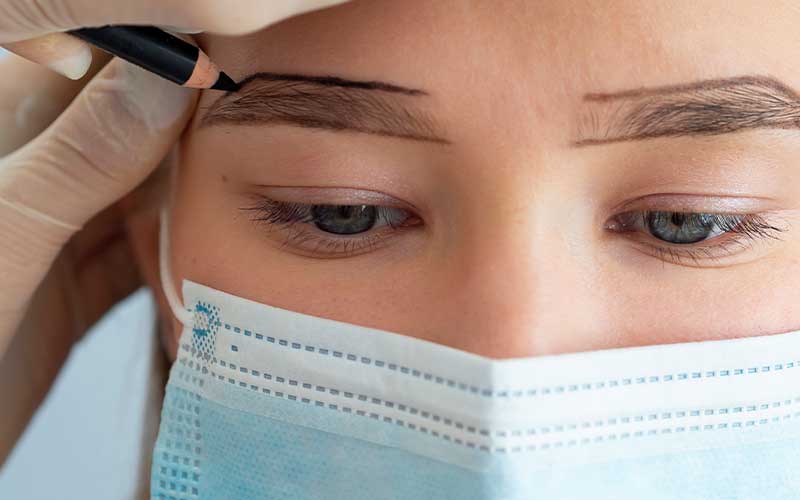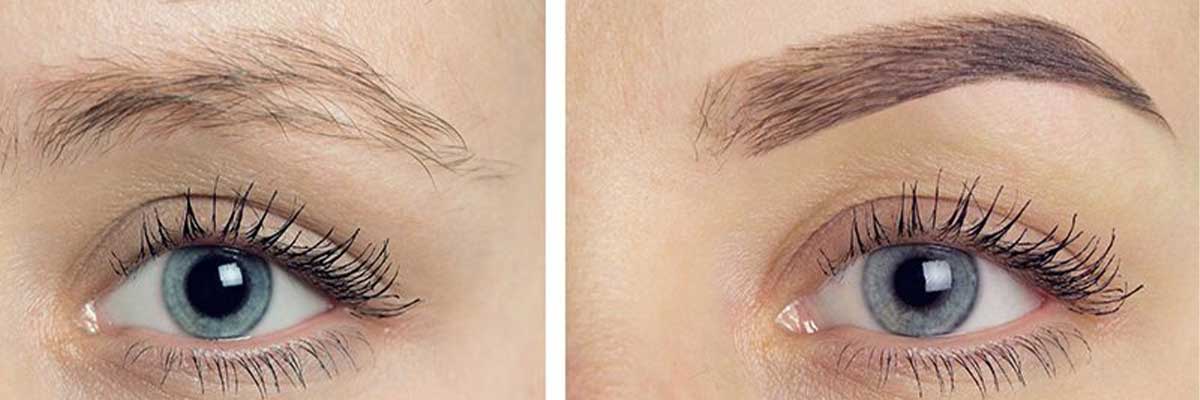Free Consultation Form
Eyebrow Transplantation is a surgical procedure which is done to eyebrows ,that have fallen out or sparse, to provide a permanent solution. Eyebrow Transplantation is very similarly done like hair transplant. In this process, the firm hair roots taken from one’s own hair are planted in the eyebrow area.
Eyebrow Transplant with FUE Technique

Eyebrow transplant is usually done with the FUE technique. With this technique, individual hair roots are taken from the neck area or other parts of the body and carefully planted in the eyebrow area. Eyebrow transplantation is done under local anesthesia and is usually applied to ensure the comfort of the patient.
Hair roots planted after the eyebrow transplant naturally begin to grow and offer a permanent solution. The full recovery process can usually take several months and the results become apparent in accordance with one’s natural
eyebrow structure. Eyebrow Transplant is preferred to provide a fuller and aesthetic look to people whose eyebrows are sparse or completely fallen out. The process is usually safely implemented and serious complications are rare. However, post-processing care and careful follow-up are important.
If you are considering eyebrow transplant, it is important to choose an experienced surgeon or a specialist clinic that will perform the process. You should consider your doctor’s advice before and after the eyebrow transplant and provide the right care. Remember that everyone’s eyebrow structure is different, so a personalized approach should be adopted.
Things You Have To Consider After The Eyebrow Transplant Process
Post-eyebrow transplant period includes post-transplant recovery. This period is important for the transplant off the eyebrows to settle fully and gain a natural look. The things to consider in the post-transplant period are:
- It is important to rest after eyebrow transplant and avoid excessive physical activities. Resting the first few days can speed up the healing process.
- It is important to protect the area that the hair was transplanted to from impact and frictions. Avoiding contact with the eyebrow area can help settle grafts.
- You can apply cold compress as recommended by your doctor to reduce post-transplant swelling and bruises.
- You should regularly use the medications your doctor has prescribed. Medicines are given to reduce the risk of infection and support recovery.
- Itching and crusting sensation may occur in the transplanted area after the process. You should be careful not to hurt by scratching eyebrows.
- You should avoid using products that are used to shape the eyebrows during the first few days. Eyebrows should be left to heal naturally.
- It is important to keep your head high while sleeping in the first few days, reduce swelling and regulate blood flow.
- After the procedure, you should regularly attend the check-ups determined by your doctor. This is important fort he follow-up of the recovery process and to intervene when necessary.

The eyebrows planted after the eyebrow transplant fall out first, and then new eyebrows grow naturally. When this process is completed, permanent and natural looking results are usually achieved. The full recovery process after planting eyebrows can vary from person to person and requires careful care. Following your doctor’s suggestions during the recovery process increases your chances of success and can prevent unwanted complications.